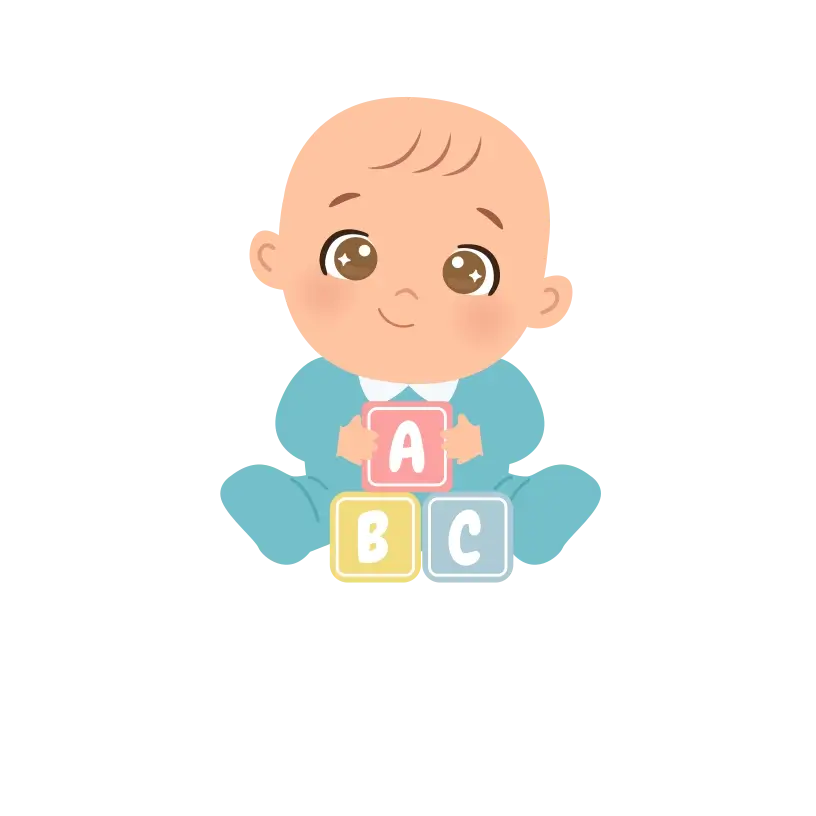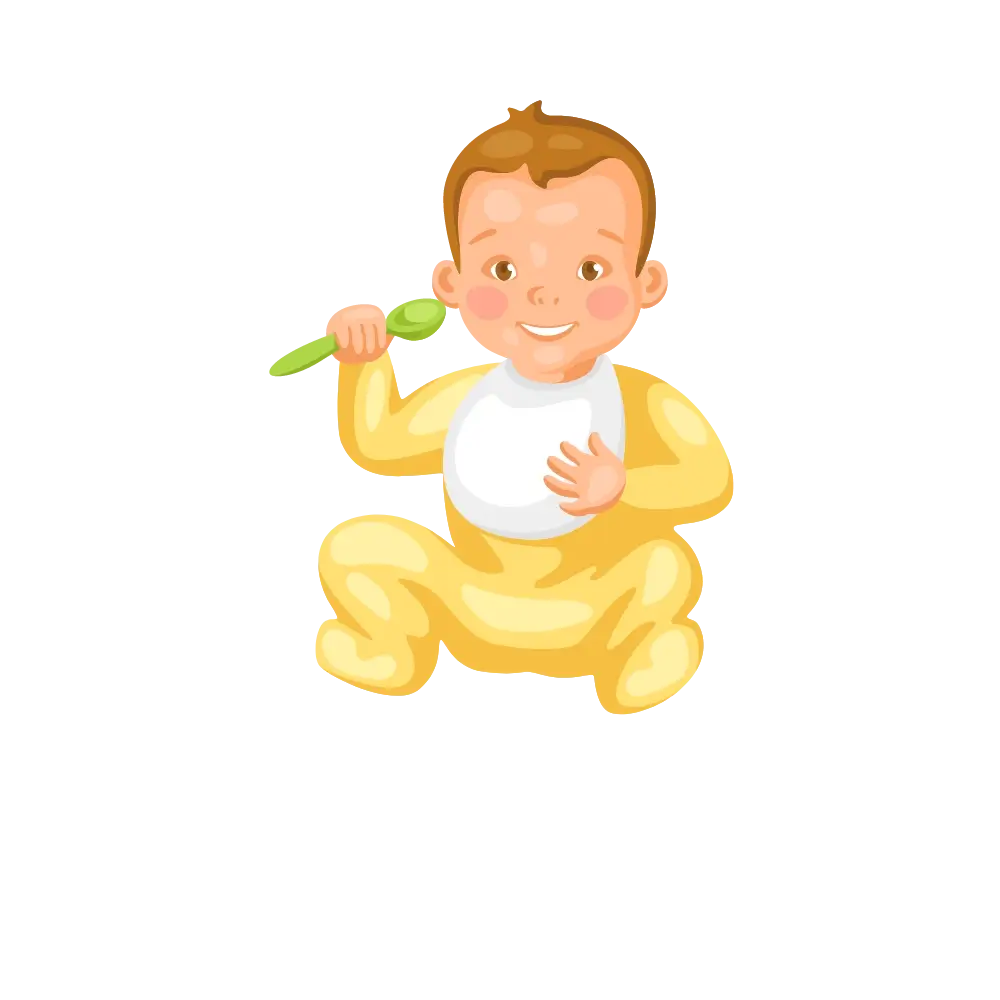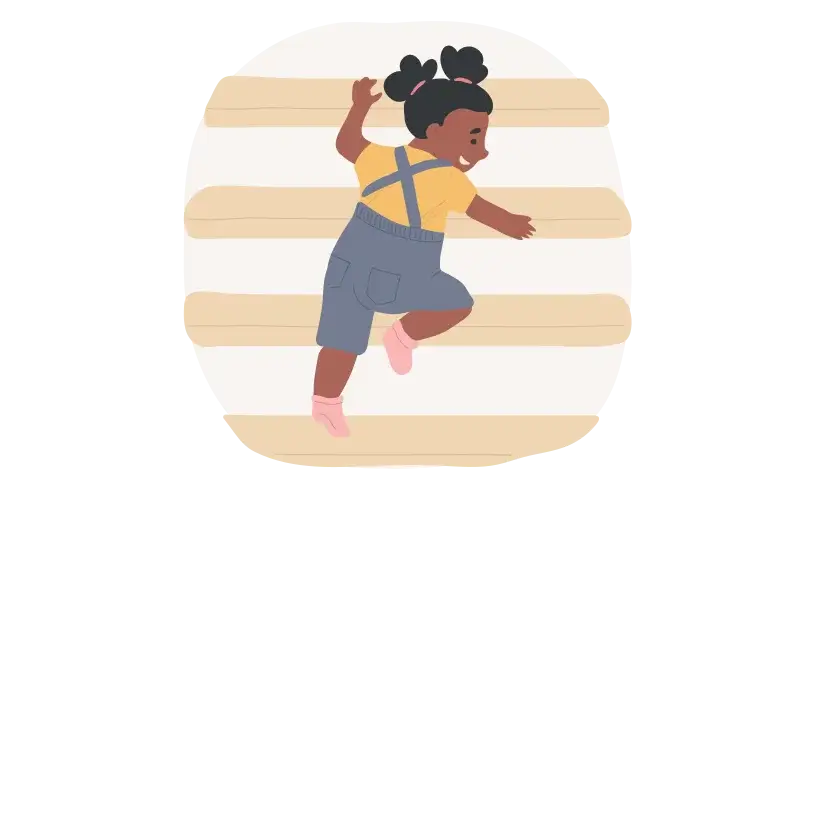Menu

Your little one has transitioned into toddlerhood, and the changes are remarkable in just three months! They’re likely on the move, whether walking or close to it and have gained newfound independence.
They can pick up objects from the floor, drink from a cup without much help, and may even attempt to climb stairs with support. Their increased mobility and curiosity mean they’re constantly exploring their surroundings, making this an exciting time for both of you!
At 15 months old, your child’s confidence in walking blossoms daily. They’re mastering the art of starting and stopping with more finesse and can transition into a standing position with increased grace. Their little hands are busy exploring and manipulating objects, delighting in moving things from one spot to another.
Physically, they’re experiencing rapid growth and honing their motor skills, which fuels their eagerness to try new activities. Alongside this physical development, your toddler is also undergoing significant social, emotional, mental, and communicative growth. They learn to navigate their feelings, interact with others, and express themselves differently. It’s an exciting time of exploration and discovery as your little one continues to flourish and develop at their own pace.
According to CDC guidelines, boys typically weigh between 18½ and 29 pounds, with heights ranging from 29 to 33 inches. Girls of the same age typically weigh around 17 to 27 pounds and measure between 28 ½ to 32½ inches tall.
These ranges provide a general guideline for the weight and height of toddlers at this stage, but remember that each child grows at their own pace and may fall slightly outside of these averages. Focusing on your child’s overall health and development is essential rather than strictly adhering to specific numbers.
Allergies arise when your child’s immune system reacts to usually harmless substances like certain foods, insect stings, dust mites, animals, or pollen. If you suspect your child has an allergy, it’s vital to consult your pediatrician for proper evaluation and guidance.
Asthma in children can show symptoms such as wheezing, shortness of breath during physical activity or at rest, a persistent dry cough, or nighttime coughing. Seeking advice from your GP is crucial for diagnosing and managing asthma effectively.
Children may endure up to 10 colds a year, with treatment involving fluids, comfort, and rest, as antibiotics are ineffective against colds. Consulting your pediatrician is wise if you have concerns about a more serious condition.
Conjunctivitis, marked by eye inflammation, may stem from infection or allergies. Symptoms include red, puffy, sore eyes with yellow or green discharge. Proper diagnosis by your pediatrician is essential to determine the type and receive appropriate treatment.
Food intolerances provoke reactions like bloating, diarrhea, and stomach pain, typically resolving independently. Discussing suspected food intolerances with your pediatrician can help manage the condition effectively.
It’s important to recognize that tantrums can vary from child to child, and it’s no different with your child. Whether they experience tantrums frequently or rarely, it’s all part of their unique journey in child development, serving to express their frustrations or upsets.
For your child, tantrums may be triggered by various factors, such as tiredness, hunger, or discomfort. They might also occur when they can’t have something they want, like a toy or treat, or they cannot get immediate attention from you or their siblings. As they grow, they’ll continue to learn how to cope with and navigate these feelings of frustration, developing important emotional skills.
During this stage, your toddler might experience heightened separation anxiety, which can show up in various ways. To help them cope and feel more secure, gradually increase the time spent apart, establish a consistent goodbye routine, and reassure them of your return. By being attentive to their needs and emotions, you can strengthen your bond and instil trust in your relationship.
Biting Behaviour typically begins around 12 months as toddlers still learn about the world around them. At this age, they’re primarily focused on their needs and may not fully grasp why biting is wrong, as they haven’t yet realised its potential to cause harm. Instead, they may see biting as a way to gain attention, fulfil their desires, or provoke an immediate response.
As toddlers grow older, they may start to understand that biting hurts, but they might still resort to it because they lack the language or skills to express themselves differently. Depending on your child’s age, your approach to teaching them about biting may need to be adjusted accordingly.
Learning to use the potty is a new skill for your child, and it’s important to approach it patiently and at their own pace. While feeling frustrated sometimes is natural, patience will ultimately help them succeed.
Each child develops bladder and bowel control at their own pace, based on their physical readiness and desire to stay clean and dry. Comparing your child’s progress to others is not helpful, as every child progresses differently.
It’s worth noting that most children gain control over their bowels before their bladder.
Consider introducing the concept of sitting on the potty as part of your child’s daily routine when they reach 18 months to 2 years old, although some parents opt to start earlier. When initiating potty training, aim for periods when there are minimal disruptions or changes to your child’s or your family’s routine. Consistency is key to avoid confusing your child, so maintaining a steady approach is essential.
During this stage, toddlers are gradually transitioning to a diet resembling that of adults. It is crucial to introduce diverse flavours and textures to expand their palate and encourage healthy eating habits early on.
Given their small stomachs, focus on offering nutrient-rich foods that support their growth and development. Steer clear of foods high in sugar and empty calories, as they provide little nutritional benefit.
Avoid sugary drinks like soda, juice drinks, sports drinks, and flavoured milk, as they can lead to unhealthy weight gain and dental problems.
Limit 100% fruit juice consumption to no more than 4 ounces per day and encourage serving juice in a cup rather than a bottle to promote healthy drinking habits. By prioritising nutritious options and being a positive role model, you can help your child develop a preference for healthy foods that will benefit them in the long term.
As toddlers become more proficient with eating solid foods, providing them with three meals and two snacks each day by the age of 15 months is advised. According to the American Academy of Pediatrics, toddlers between 1 and 3 years old require approximately 40 calories per day for every inch of height.
Whole milk, whether animal-based, plant-based, or breast milk, can be offered as a beverage; it’s important to note that solid foods will likely constitute most of their diet.
To support their growth and development, provide calories from nutrient-rich sources like fresh fruits, vegetables, dairy, and protein. Milk, rich in calcium, is particularly important for your child’s diet at this stage, helping to meet their nutritional needs for healthy bone development and overall well-being.
At this stage, it’s recommended for toddlers to aim for around 13.25 hours of sleep each day, falling within the American Academy of Sleep Medicine’s suggested range of 11 to 14 hours of total sleep within 24 hours. This includes approximately 11 hours of nighttime sleep and 2 to 3 hours allocated for 1 or 2 daytime naps.
However, it’s essential to understand that sleep needs vary widely among babies and toddlers, and there isn’t a universal solution. Rather than fixating on a specific number of hours, it’s more important to observe your child’s behavior, such as their mood and energy levels. This allows you to assess whether they’re getting enough rest to effectively support their overall health and development.

Your child’s visual capabilities evolve significantly during the transition from 1 to 2 years old. By age 2, they can notice intricate details and their depth perception becomes well-developed. As a parent, you play a crucial role in providing pleasant and visually stimulating environments.
Engage your toddler with colourful picture books, interactive toys, and outings to varied settings like the park, grocery store, or a friend’s house, where they can explore and observe different sights.

By 15 months, toddlers are not only comprehending simple commands but also starting to recognize familiar objects and the names of family members. While their language skills are still developing, they’re becoming more adept at nonverbal communication.
They enjoy engaging with sounds and laughter through children’s songs or playing with friends in the park. Encouraging their love for auditory experiences can further support their language development and overall cognitive growth.

As toddlers refine their language skills, they become more vocal about their food preferences. Introducing a variety of tastes and smells during meals or outings can help them expand their palate. It’s common for toddlers to reject new foods initially, but consistent exposure can eventually lead to acceptance.
Encourage descriptive language during meal times to help them articulate their experiences and develop an appreciation for different flavours and aromas.

While toddlers may seem constantly on the move, they still crave affection and reassurance from their caregivers. Show your love through cuddles and kisses, reinforcing their sense of security and emotional well-being. Additionally, ensure your home is childproofed to create a safe environment for exploration.
Address behaviours like hitting by teaching alternative ways to express emotions and setting clear boundaries when necessary, nurturing their social and emotional development alongside their physical exploration.

Your child’s visual capabilities evolve significantly during the transition from 1 to 2 years old. By age 2, they can notice intricate details and their depth perception becomes well-developed. As a parent, you play a crucial role in providing pleasant and visually stimulating environments.
Engage your toddler with colourful picture books, interactive toys, and outings to varied settings like the park, grocery store, or a friend’s house, where they can explore and observe different sights.

By 15 months, toddlers are not only comprehending simple commands but also starting to recognize familiar objects and the names of family members. While their language skills are still developing, they’re becoming more adept at nonverbal communication.
They enjoy engaging with sounds and laughter through children’s songs or playing with friends in the park. Encouraging their love for auditory experiences can further support their language development and overall cognitive growth.

As toddlers refine their language skills, they become more vocal about their food preferences. Introducing a variety of tastes and smells during meals or outings can help them expand their palate. It’s common for toddlers to reject new foods initially, but consistent exposure can eventually lead to acceptance.
Encourage descriptive language during meal times to help them articulate their experiences and develop an appreciation for different flavours and aromas.

While toddlers may seem constantly on the move, they still crave affection and reassurance from their caregivers. Show your love through cuddles and kisses, reinforcing their sense of security and emotional well-being. Additionally, ensure your home is childproofed to create a safe environment for exploration.
Address behaviours like hitting by teaching alternative ways to express emotions and setting clear boundaries when necessary, nurturing their social and emotional development alongside their physical exploration.
Difficulty sleeping: Toddlers may have difficulty falling or staying asleep when uncomfortable. This could be due to physical discomfort, such as teething pain or an illness, or emotional discomfort, such as feeling anxious or unsettled.
Difficulty moving: If a toddler is experiencing discomfort, they may find it challenging to move around as freely as usual. This could be due to muscle soreness, injury, or illness, making certain movements painful or uncomfortable.
Becoming quiet: When uncomfortable, toddlers may become unusually quiet or withdrawn. This could indicate that they feel unwell or in pain and may lack the energy or desire to engage in their usual activities.
Refusal to eat or drink: Discomfort can often lead to a loss of appetite in toddlers. They may refuse to eat or drink, either because they are experiencing physical discomfort that makes swallowing difficult or because they simply do not feel hungry or thirsty.
Refusal to be held: If your toddler is uncomfortable, they may resist being held or cuddled. This could be because physical contact exacerbates their discomfort or because they prefer to be left alone when not feeling well.
Holding on to an area of the body: Toddlers may instinctively hold onto or touch a part of their body that is causing discomfort. This could be a sign of pain or injury in that area.
Becoming angry: Discomfort can often lead to frustration or irritability in toddlers. They may become easily angered or upset, especially if they cannot communicate their discomfort effectively.
Restlessness: Toddlers who are uncomfortable may exhibit restlessness, finding it difficult to stay still or settle down. They may toss and turn in bed or fidget constantly, unable to find a comfortable position.
Difficulty calming down: When toddlers are uncomfortable, they may have difficulty calming themselves down or soothing their distress. They may cry inconsolably or become increasingly agitated, making it challenging for caregivers to comfort them.

Toddlers may use pointing to express their desires, such as indicating a dog they wish to pet or a toy they want to play with. This accelerated language development facilitates interaction with your toddler and provides insights into their interests, enriching your understanding of them.

Your child is likely mastering the art of walking independently. While some toddlers may only take a few wobbly steps, about half can walk confidently by this age. A few adventurous ones might even be running or attempting to walk backwards, showcasing their growing motor skills and sense of balance.
This developmental milestone marks an exciting phase as your child gains more mobility and explores the world on their own two feet.

As your child becomes more confident in their walking abilities, they may start attempting to climb stairs. While climbing up comes naturally as a new challenge, coming down can be trickier.
It’s essential to supervise closely and demonstrate safe techniques for descending backwards. Keep stairs gated to prevent unsupervised attempts and ensure your child’s safety during this learning process.

As toddlers explore their environment, they’ll gradually grasp how different objects work, which is crucial for cognitive growth. You may notice them attempting to use items as intended, even if not entirely successfully.
For instance, they might try running a comb through their hair or holding a toy telephone to their ear. These moments of discovery are bound to bring joy as you witness your child making connections and learning about the world around them.

Around 15 months, toddlers may display increased affection towards you. This could include actions such as hugging, cuddling, or giving kisses. They may also express their emotions in other ways, such as clapping when excited or using a broader range of facial expressions to communicate their feelings.

At 15 months old, your little one’s imaginative play blossoms, focusing on mimicking familiar behaviours. You may notice them picking up objects like a spoon, pretending to eat, or laying their head on your lap to pretend to sleep.
Through these actions, they’re beginning to use symbols to express their ideas, even though their pretend play closely resembles real behaviours. This stage of “pretending” is an exciting milestone in their development as they explore and make sense of the world around them through imaginative play.

Toddlers may use pointing to express their desires, such as indicating a dog they wish to pet or a toy they want to play with.
This accelerated language development facilitates interaction with your toddler and provides insights into their interests, enriching your understanding of them.

Your child is likely mastering the art of walking independently. While some toddlers may only take a few wobbly steps, about half can walk confidently by this age.
A few adventurous ones might even be running or attempting to walk backwards, showcasing their growing motor skills and sense of balance.This developmental milestone marks an exciting phase as your child gains more mobility and explores the world on their own two feet.

As your child becomes more confident in their walking abilities, they may start attempting to climb stairs. While climbing up comes naturally as a new challenge, coming down can be trickier.
It’s essential to supervise closely and demonstrate safe techniques for descending backwards. Keep stairs gated to prevent unsupervised attempts and ensure your child’s safety during this learning process.

As toddlers explore their environment, they’ll gradually grasp how different objects work, which is crucial for cognitive growth. You may notice them attempting to use items as intended, even if not entirely successfully.
For instance, they might try running a comb through their hair or holding a toy telephone to their ear. These moments of discovery are bound to bring joy as you witness your child making connections and learning about the world around them.

Around 15 months, toddlers may display increased affection towards you. This could include actions such as hugging, cuddling, or giving kisses.
They may also express their emotions in other ways, such as clapping when excited or using a broader range of facial expressions to communicate their feelings.

At 15 months old, your little one’s imaginative play blossoms, focusing on mimicking familiar behaviours. You may notice them picking up objects like a spoon, pretending to eat, or laying their head on your lap to pretend to sleep.
Through these actions, they’re beginning to use symbols to express their ideas, even though their pretend play closely resembles real behaviours. This stage of “pretending” is an exciting milestone in their development as they explore and make sense of the world around them through imaginative play.
Building blocks: Introduce your little one to the world of building blocks, allowing them to experiment with stacking and knocking down towers and structures. This enjoyable activity enhances their fine motor skills and spatial awareness and teaches them about cause and effect.
Shape sorting: Introduce your child to a shape-sorting toy featuring vibrant, large shapes. Assist them in recognising and fitting the shapes into their respective slots, fostering cognitive development and improving hand-eye coordination.
Scribbling: Provide chunky crayons for your toddler to explore during scribble sessions. These crayons are easy for them to grasp, safe for chewing, and relatively easy to clean. Lay out butcher paper on the floor or tape sheets to the table, providing ample space for them to unleash their creativity.
Catch and release: Promote your child’s gross motor skills by engaging in catch and release-activities. Roll soft balls of varying sizes and demonstrate how to roll them back and forth together. Alternatively, create a mini bowling setup using empty plastic bottles or cardboard paper towel rolls as pins.
Storytime: During storytime, your toddler is improving at turning the pages of their favourite books. They enjoy pointing to pictures when you ask about things in the story. This helps them learn new words and understand what’s happening in the book.
Experts advise that younger toddlers should have several servings of whole milk daily, while older toddlers can switch to low-fat or skim milk. Cow’s milk provides essential nutrients crucial for growth and development.
However, the American Academy of Pediatrics (AAP) emphasizes that water and milk are the optimal beverage choices for very young children aged 12 to 24 months. The AAP suggests that toddlers in this age range consume 2–3 cups (16–24 ounces) of whole milk daily.
Understanding that language development varies, most children start speaking their first words between 12 to 18 months, but some may take longer. Keep interacting with your child through conversation, reading, and creating a rich language environment to support their growth. Consulting a pediatrician or speech therapist can offer valuable guidance and support if concerns persist.
It’s common for children to experience sleep regressions around 15 months of age. These regressions can be caused by factors such as teething, developmental milestones, or changes in routine.
During this time, your child may have difficulty falling asleep, wake up more frequently at night, or have shorter naps. Consistency in bedtime routines and reassurance can help navigate through these periods of sleep disturbance.
There could be several reasons why your 15-month-old is chewing but not swallowing. It could be due to teething discomfort, sensory exploration, or a developmental stage. They may also not yet be ready to swallow certain food textures.
A 15-month-old child typically needs at least 8 ounces (237ml) of water daily, spread throughout the day. To keep them hydrated, offering water regularly is important, especially during meals and snacks. However, monitoring their intake and ensuring they’re not drinking excessively is essential, as too much water can interfere with their appetite for other nutrients.
Experts advise that younger toddlers should have several servings of whole milk daily, while older toddlers can switch to low-fat or skim milk. Cow’s milk provides essential nutrients crucial for growth and development.
However, the American Academy of Pediatrics (AAP) emphasizes that water and milk are the optimal beverage choices for very young children aged 12 to 24 months. The AAP suggests that toddlers in this age range consume 2–3 cups (16–24 ounces) of whole milk daily.
Understanding that language development varies, most children start speaking their first words between 12 to 18 months, but some may take longer.
Keep interacting with your child through conversation, reading, and creating a rich language environment to support their growth. Consulting a pediatrician or speech therapist can offer valuable guidance and support if concerns persist.
It’s common for children to experience sleep regressions around 15 months of age. These regressions can be caused by factors such as teething, developmental milestones, or changes in routine.
During this time, your child may have difficulty falling asleep, wake up more frequently at night, or have shorter naps. Consistency in bedtime routines and reassurance can help navigate through these periods of sleep disturbance.
There could be several reasons why your 15-month-old is chewing but not swallowing. It could be due to teething discomfort, sensory exploration, or a developmental stage. They may also not yet be ready to swallow certain food textures.
A 15-month-old child typically needs at least 8 ounces (237ml) of water daily, spread throughout the day. To keep them hydrated, offering water regularly is important, especially during meals and snacks. However, monitoring their intake and ensuring they’re not drinking excessively is essential, as too much water can interfere with their appetite for other nutrients.
1. Advocate Children’s Hospital: Signs of Pain in a Child
2. American Academy of Pediatrics: Serving Sizes for Toddler
3. American Academy of Sleep Medicine: Recommended Amount of Sleep Pediatric
4. Center for Disease Control and Prevention: Birth to 24 months: Girls: Length-for-age and Weight-for-age percentiles
5. Center for Disease Control and Prevention: Birth to 24 months: Boys: Length-for-age and Weight-for-age percentiles
6 Children Minnesota: The Senses and Your 1-to 2-Year-Old
7. Healthline: How much milk does a toddler need?
8. Nemours Kids Health: Feeding Your 1-to 2- Years-Old
9. Nemours Kids Health: Temper Tantrums
10.NHS: How to Potty Train
11. Raising Children: 1-5 Years: Young Children’s Health: What to expect
© Mindsmaking 2024